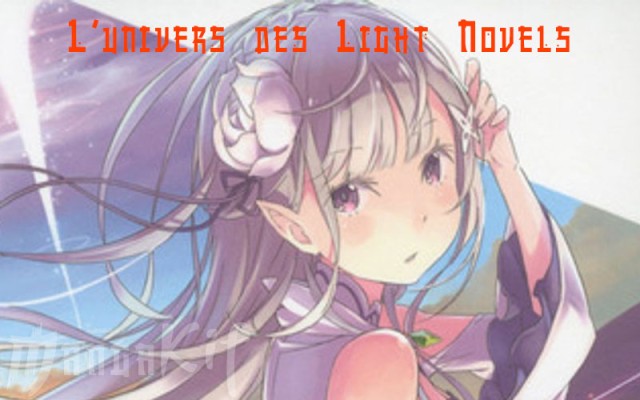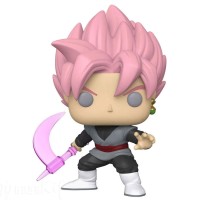The World of Light Novels: Bridging Manga and Literature
Ah, light novels! Those Japanese gems that beautifully blend the energy of manga with the depth of literature. Behind many of your favorite anime and manga, there's often a light novel that started it all. More than just precursor tales, they reflect a constantly evolving society, skillfully merging literary tradition with modern graphics. This article takes you through this unique narrative form, from its beginnings to its adaptations on the big and small screen. It's a must-read for all enthusiasts of Japanese culture.

1. What is a Light Novel?
When diving into Japanese culture, one quickly encounters the concept of light novels. While they might be less renowned in the West compared to their manga counterparts, they hold a significant place in Japan.
Originating in Japan, light novels can be likened to short novels, often accompanied by manga-styled illustrations. Unlike traditional novels, they're typically shorter, more straightforward, and mainly cater to teenagers and young adults. Given their convenient size and compelling content, they're perfect for a subway read or a short break.
Furthermore, light novels have an exceptional ability to meld the best aspects of manga and literature. They combine the visual appeal of manga with the narrative depth of novels, providing a truly immersive reading experience.
2. History of Light Novels
The journey of light novels through Japanese cultural history is a captivating one that deserves our attention. From their humble beginnings to their widespread success today, they have continuously evolved to meet the shifting expectations of their audience.
2.1. Origins
The genesis of light novels can be traced back to the pulp magazines of the 1970s, which were inexpensive publications filled with entertaining stories. Early light novels were short tales with manga-inspired drawings, often geared towards a younger audience. They quickly gained traction, setting themselves apart from conventional novels and traditional manga.2.2. Evolution & Popularity
Over the years, light novels have diversified, spanning various genres and reaching a broader audience. Talented writers delved into deeper and more intricate themes, adding prestige to this format. Today, with the advent of the internet and fan forums, the light novel community has expanded, fostering direct interactions between authors and readers. Their significance has been further elevated with adaptations into manga, anime, and even films, solidifying their pivotal role in Japanese culture.
3. Characteristics of Light Novels
Light novels are not merely illustrated books. They possess distinct features that set them apart from other literary forms. From their length and structure to their unique style, they provide a one-of-a-kind reading experience.
3.1. Length & Structure
Unlike dense and lengthy traditional novels, light novels are shorter, typically ranging between 40,000 and 50,000 words. This brevity is deliberate, allowing for swift reading while maintaining the reader's engagement. Structurally, they are often split into concise chapters with well-defined narrative arcs that promote continued reading.
3.2. Writing Style & Visual Elements
The writing style of light novels is forthright and captivating, using straightforward language for ease of understanding. However, what truly distinguishes them are the illustrations peppered throughout. These visuals, typically rendered in a manga style, add a graphic dimension, enhancing the reading journey. They allow readers to vividly picture the characters and pivotal scenes, making the experience even more engaging.
3.3. Target Audience & Genre Diversity
Initially targeting teenagers and young adults, light novels have since expanded their readership to encompass all age groups. Their growing popularity can partly be attributed to the wide array of genres they explore: fantasy, thrillers, romance, science fiction, and more. There's a light novel for every taste! This vast range speaks volumes about the creativity of the authors and the richness of Japanese culture.
4. From Page to Screen: Light Novel Adaptations
The influence of light novels isn't confined to literature. Many have been adapted into manga and anime series.
4.1. Examples of Manga and Anime Adaptations
Several light novels gained widespread fame through their adaptations. "Sword Art Online," originally a literary work, experienced immense popularity when adapted into an anime, as did "Re:Zero - Starting Life in Another World" and "The Melancholy of Haruhi Suzumiya". While these stories were well-received in their printed form, they discovered a whole new visual and auditory dimension that captivated millions of fans globally.
4.2. The Adaptation Process and its Challenges
Adapting a light novel into manga or anime isn't straightforward; it's a multifaceted challenge! The task involves translating the depth and nuance of the text into visual sequences while preserving the essence of the original story. Challenges include deciding which scenes to include or omit, depicting characters' internal dialogues, and conveying cultural nuances to an international audience.
4.3. Criteria for Adaptation
The decision to adapt a light novel hinges on multiple factors. A primary criterion, of course, is the book's popularity and audience reception. Publishers and studios seek stories with strong visual potential and those aligning with current market trends, reflecting the tastes of the moment. However, even the most renowned works can't guarantee a successful adaptation. Often, it's a blend of timing, marketing, and of course, the inherent quality of the narrative that determines if a story will leap from page to screen.
5. In Conclusion
In wrapping up our exploration of light novels, it's evident that these books are more than a fleeting trend in the expansive literary universe. They hold a distinct position, bridging various media, and remarkably and unpredictably shape contemporary culture.
These works have profoundly reshaped modern readers' expectations, merging manga's visual aspects with narrative depth found in novels. Indeed, they introduced a new generation to the art of storytelling while offering seasoned readers a fresh take on familiar themes and topics. In today's fast-paced content consumption culture, light novels stand out as both accessible and profound.
With a growing fan base and increasing acceptance within the literary community, the future looks bright for light novels. They continue to inspire adaptations into anime, manga, and even films, underscoring their versatility and lasting impact. Beyond their current form, they exemplify the convergence of media and genres, showcasing how creative amalgamation can birth renewed narrative experiences poised to enchant audiences worldwide.

 Francais
Francais 


